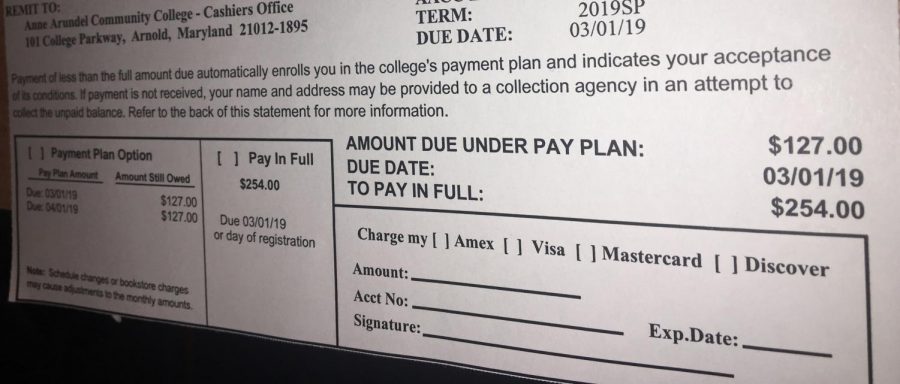AACC to raise student tuition in 2020
March 4, 2019
AACC’s Board of Trustees voted on Feb. 26 to raise student tuition by $4 per credit hour in fiscal year 2020 as part of an overall $118.6 million budget.
The college has raised tuition each year by $2 to $3 a credit since 2004, except for from 2007 to 2009. In fall 2020, full-time, in-state students will pay $116 per credit. Last fall, tuition was $112 per credit.
Student tuition helps pay the college’s operating expenses, like faculty and staff salaries, according to Vice President for Learning Resource Management Melissa Beardmore.
According to Beardmore, the college is raising the tuition by the maximum amount that Maryland law allows.
Out-of-county students will pay $231 in fall 2019, up from $219 this year. Out-of-state students will pay $395 next fall, up from $381 this year.
Some students said the tuition increase comes at a bad time.
“It’s a little odd that they’re raising the price now, when half the college is fenced off and it’s annoying to just navigate the campus,” third-year environmental science student John Joseph said. “It’d be better to wait until the new building has finished construction to raise the price, so it feels like there’s a good reason for the raise.”
Second-year transfer studies student Bobby Bohanan said the tuition increase might make students more careful about selecting their courses.
“I definitely think it will affect those paying for school alone,” Bohanan said. “The rise could definitely affect students as far as making sure you have access to the completely correct classes you need, so that you aren’t spending extra money for no reason.”
Vice President for Learning Mike Gavin said for many students, the number of developmental math and English credits they will have to take—and pay for—will offset the tuition increase.
He explained that since fall 2018, students could start earning math credit after taking just one or two non-credit courses, compared with the 10 hours that some were required to enroll in before.
However, Gavin said the college must raise tuition this year and next to pay more full-time faculty and cover other expenses for operating the college.
“The $4 tuition rate increase allows the college to continue to attract and retain skilled faculty and staff and continues funding for … innovative programs,” Beardmore said.
Gavin said the tuition increase will pay for additional faculty. Gavin added that the college will focus on increasing the number of full-time faculty positions until 60 percent of AACC professors teaching classes are working here full time.
He said the number of full-time professors versus part-time adjuncts is linked to student retention and graduation rates.
According to Beardmore, the college will continue to raise tuition incrementally each year, as opposed to all at once.
“How would you feel if you … came in as a freshman … and got hit with a $60 increase, when the students two years prior had zero,” Beardmore added. “That’s not quite equitable.”
Equity is also a factor the tuition increase will support, Beardmore said.
Along with more full-time faculty, students in fall 2020 will see efforts by the college to engage students upon entry, progress them academically and increase course completion.













tlendnews • Mar 7, 2019 at 9:56 AM
Thanks a lot for the article post.Much thanks again. Fantastic.